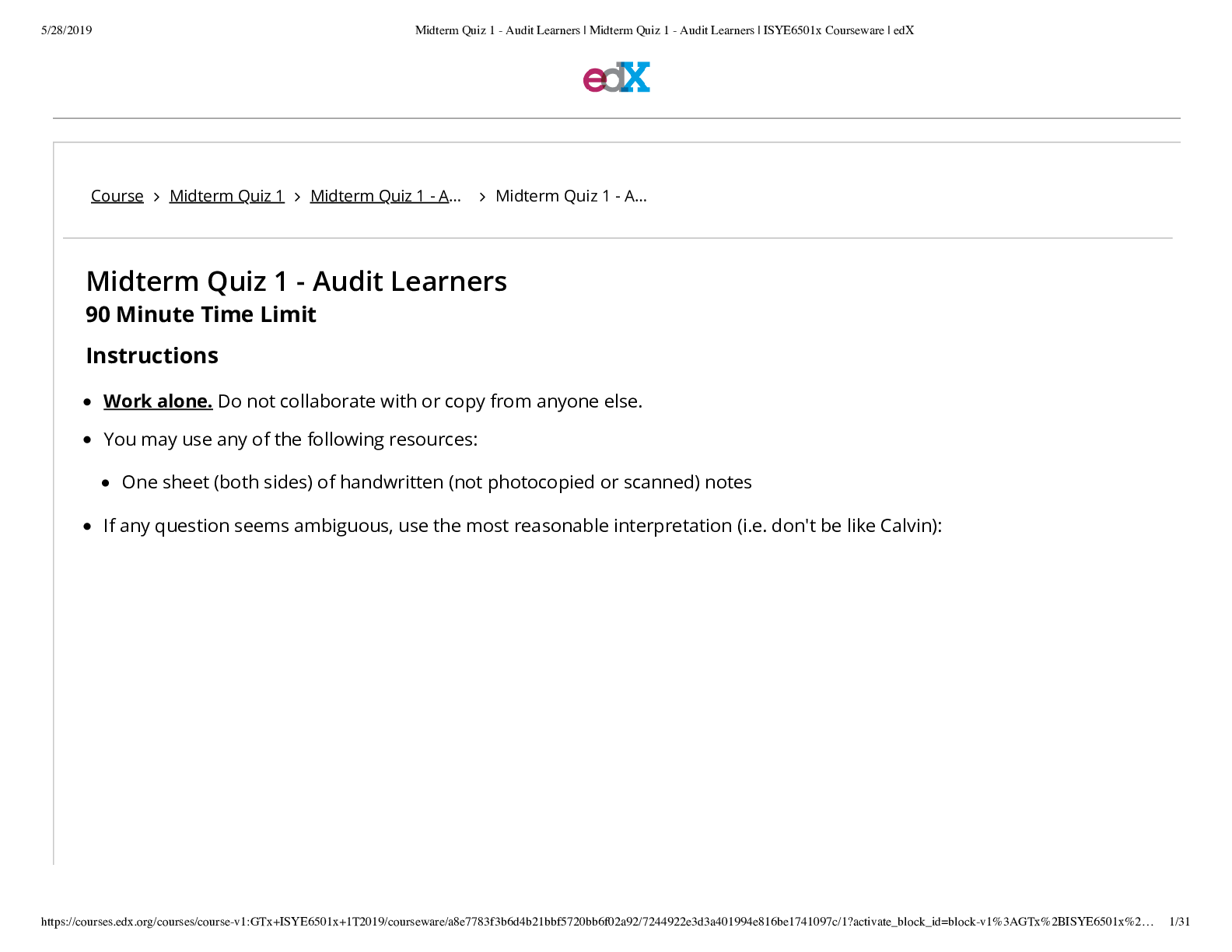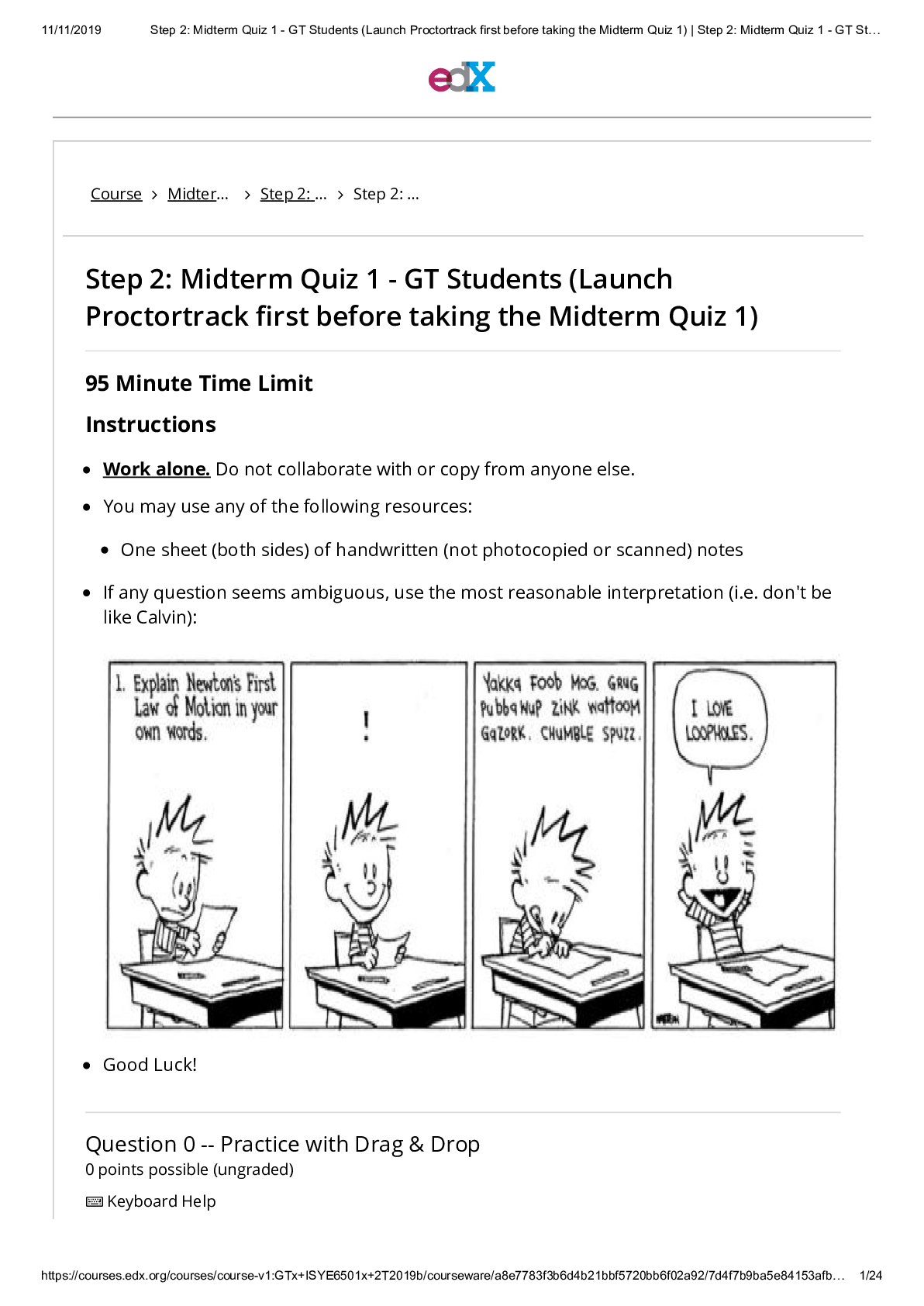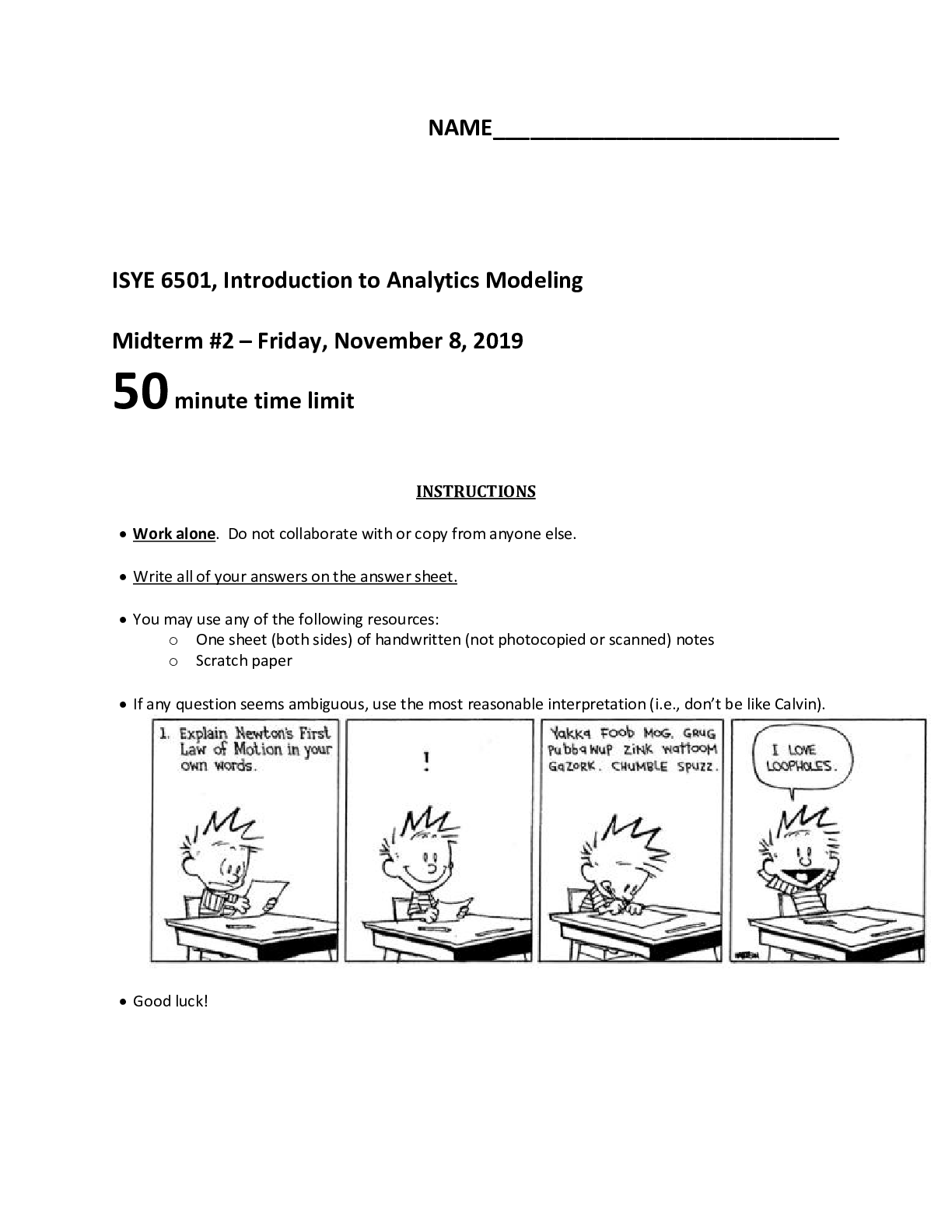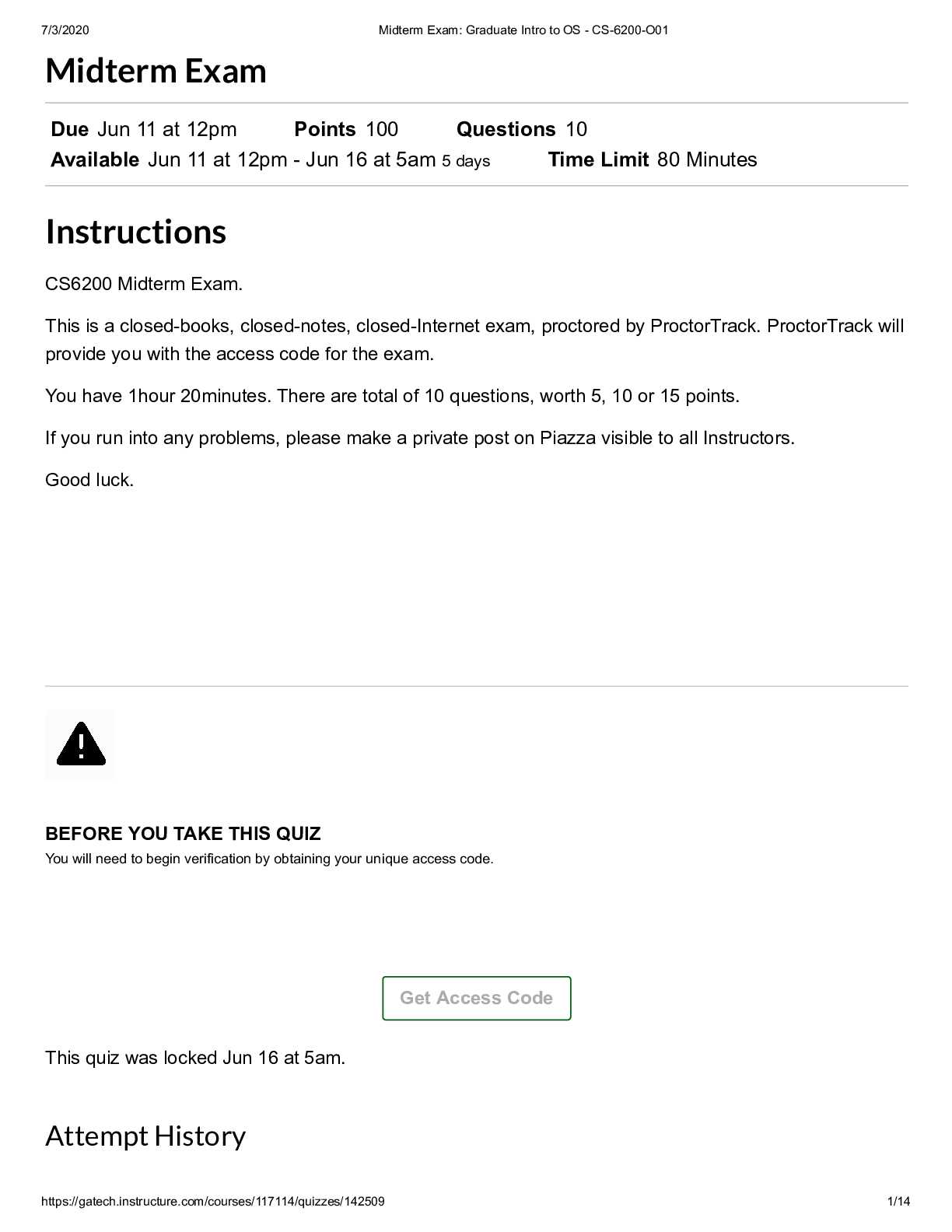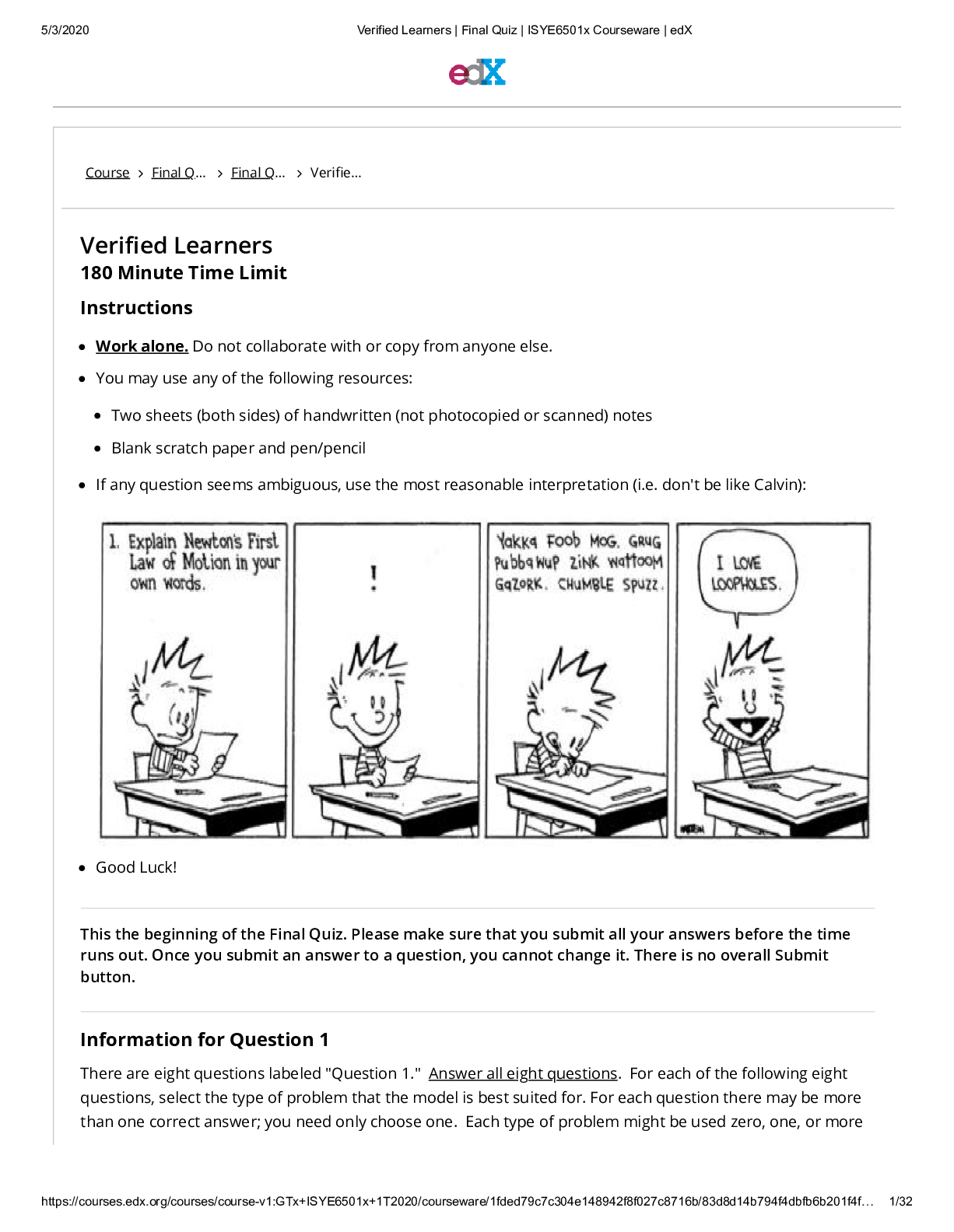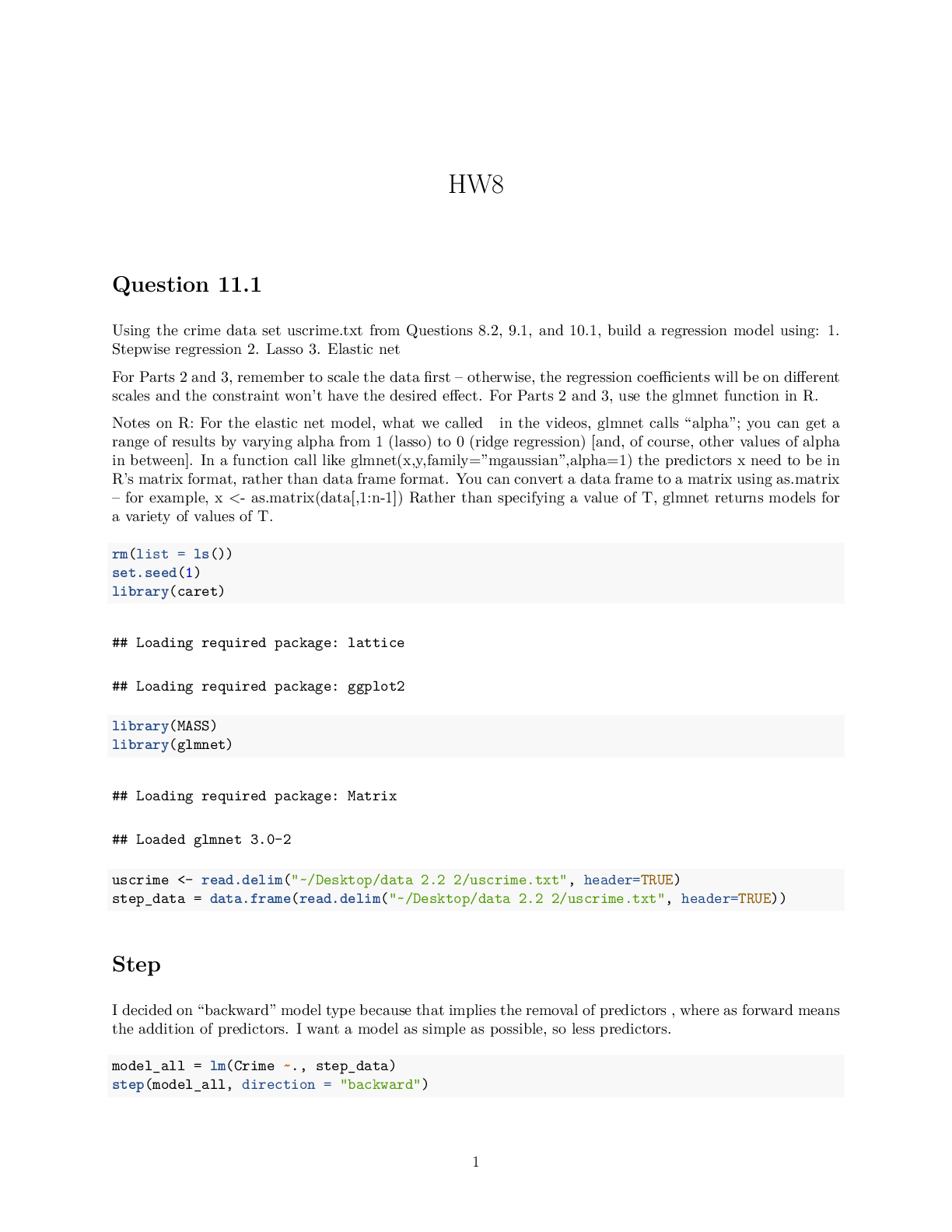Mathematics > QUESTIONS & ANSWERS > ISYE 6644su20-HW07-Module 07a solns ALL answers correct, 100% score | Georgia Institute Of Technolog (All)
ISYE 6644su20-HW07-Module 07a solns ALL answers correct, 100% score | Georgia Institute Of Technology
Document Content and Description Below
ISyE 6644 | HW7 | Summer 2020 (covers Module 7, Lessons 1{9) 1. (Lesson 7.1: Introduction to Random Variate Generation.) Unif(0,1) PRNs can be used to generate which of the following random entitie... s? (a) Exp(λ) random variates (b) Nor(0,1) random variates (c) Triangular random variates (d) Bern(p) random variates (e) Nonhomogeneous Poisson processes (f) All of the above | and just about anything else! Solution: (f). 2 2. (Lesson 7.2: Inverse Transform Theorem | Intro.) If X is an Exp(λ) random variable with c.d.f. F(x) = 1 − e−λx, what’s the distribution of the random variable 1 − e−λX? (a) Unif(0,1) (b) Nor(0,1) (c) Triangular (d) Exp(λ) (e) None of the above Solution: Note that 1 − e−λX = F(X) ∼ Unif(0; 1), where the last step follows by the Inverse Transform Theorem. Thus, the correct answer is (a). 2 3. (Lesson 7.2: Inverse Transform Theorem | Intro.) If U is a Unif(0,1) random variable, what’s the distribution of −λ1‘n(U)? (a) Unif(0,1)2 (b) Nor(0,1) (c) Triangular (d) Exp(λ) (e) None of the above Solution: Since U and 1 − U are both Unif(0,1) (by symmetry), we have − 1 λ ‘n(U) ∼ −1 λ‘n(1 − U) ∼ Exp(λ); where the last step follows from Lesson 2’s Inverse Transform Theorem example. Thus, the answer is (d). 2 4. (Lesson 7.2: Inverse Transform Theorem | Intro.) Suppose that U1; U2; : : : ; U5000 are i.i.d. Unif(0,1) random variables. Using Excel (or your favorite programming language), simulate Xi = −‘n(Ui) for i = 1; 2; : : : ; 5000. Draw a histogram of the 5000 numbers. What p.d.f. does the histogram look like? (a) Uniform (b) Normal (c) Triangular (d) Exponential (e) Bernoulli Solution: By the Inverse Transform Theorem, all of the Xi’s are Exp(λ = 1). Since we have a histogram of 5000 of these, it really ought to look like an exponential p.d.f., f(x) = e−x, x ≥ 0. Thus, the answer is (d). 2 5. (Lesson 7.3: Inverse Transform | Continu [Show More]
Last updated: 3 weeks ago
Preview 2 out of 8 pages

Loading document previews ...
Buy this document to get the full access instantly
Instant Download Access after purchase
Buy NowInstant download
We Accept:

Reviews( 0 )
$9.00
Can't find what you want? Try our AI powered Search
Document information
Connected school, study & course
About the document
Uploaded On
May 31, 2021
Number of pages
8
Written in
Additional information
This document has been written for:
Uploaded
May 31, 2021
Downloads
0
Views
144














